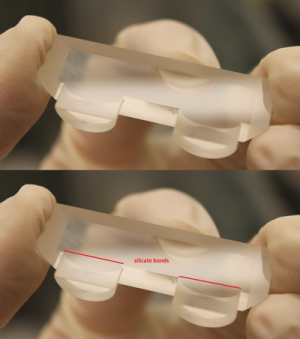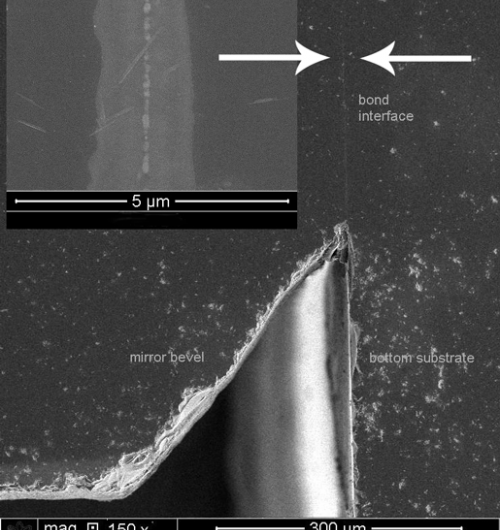Thin, strong bond for vacuum seal

An ultra-stable, ultra-thin bonding technology has been adapted by researchers in PML's Semiconductor and Dimensional Metrology Division for use as a super-strong vacuum seal.
Though it is less than 100 nanometers thick, the bond can withstand pressure up to 2 megapascals (almost 300 pounds per square inch), and its drift, or how much it shifts over time, is on the order of less than 3 trillionths of a meter per hour.
The method, called silicate bonding, had previously used by other experiments to affix optical materials to one another but its use as a vacuum seal had not been attempted to the researchers' knowledge.
The team used the technique for their recent prototype of the first photonic pressure sensor, a device that outperformed the present standard, a 3-meter-tall mercury-based device, in resolution, speed, and range at a fraction of the size.
Several industry representatives have already shown interest in the prototype pressure sensor, which could be used for semiconductor, glass, and aerospace manufacturing.

Provided by National Institute of Standards and Technology




















